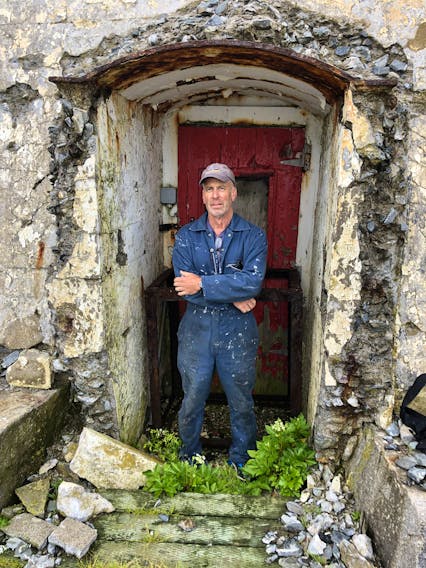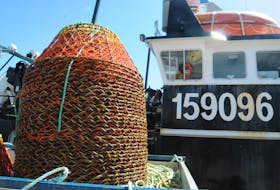A lot of strange, strange stuff happened in the recent federal election. The other day someone pointed out one of the oddest: that, in the lead up to the Oct. 21 vote, Elections Canada delivered special ballots via helicopter to lighthouse keepers living on remote islands along British Columbia’s coast.
The agency, a news story informed us, has in the past delivered ballots by boat, snowmobile, plane and, for all we know, dog-sled.
This time it used a Canadian Coast Guard chopper to shuttle two Elections Canada service agents to 27 lighthouses up and down the West Coast, where 58 voting-age people live.
That our agents went to such lengths so that a few Canadians could have their democratic say in the governing of their country is mighty cool.

The jaw-dropper for someone who takes a passing interest in lighthouses was, wait, 27 British Columbia lighthouses are still manned?
When I called Chris Mills, a former light keeper who has written extensively about the lighthouses of Nova Scotia, I could hear him nodding from his home in Ketch Harbour; in my mind’s eye his face tightened in a small grimace.
Then he told me that Newfoundland at the moment has 23 staffed lighthouses. And that New Brunswick also has a single manned lighthouse, although that’s on Machias Seal Island in the Gulf of Maine, and is maintained for Canadian sovereignty reasons.
He paused to let that information sink in because we both knew that the last keeper left a Nova Scotia lighthouse, the Cape Forchu light, in Yarmouth County, way back in 1993.
It was about will Mills told me, proceeding to explain.
Lighthouses become automated
When he was the principal keeper at the Dryad Point Light, on British Columbia’s isolated central coast, the feds told him in March of 1997 to pack his bags because it and most every other lighthouse in the province was soon going to be fully automated.
It was nothing personal. By then new technology meant that it was no longer necessary to have a living, breathing human being on site to run lights and fog-horns to keep fishermen and sailors safe.
Between 1970 and 1996, 264 Canadian lighthouses, including every one in Nova Scotia as well as in Quebec, Prince Edward Island and Ontario, were automated.
British Columbia and Newfoundland were slated to join them. But something happened.

On the Left Coast, a grassroots movement to save the lighthouse keepers emerged.
“The de-staffing was rescinded,” said Mills, who now does search and rescue work out of Nova Scotia for the coast guard and who jokes that if he had been able to stay on at Dryad Point he would be getting ready to retire about now.
The same thing happened in Newfoundland and Labrador where the outcry was also loud.
Yet, Nova Scotia, home to the most lighthouses in Canada, was different.
“Essentially, we let it happen,” Mills said, “and that is a shame.”
As someone who spent nine years minding lights he is biased, but then again so am I, a man who only knows the inside of a lighthouse from books and movies.
What was lost
Mills isn’t naïve: he knows that most fishermen depend upon buoys and Global Positioning Systems, not lighthouse lights, for navigation.
The keepers in British Columbia earn their pay by providing regular weather broadcasts for passing freighters and kayakers, doing routine maintenance on the light, and even keeping an eye on isolated stretches of ocean and shore line.
Nova Scotia keepers could do all of that too.
But he’s a romantic when it comes to lighthouses, which have been on this earth since the Pharos of Egypt built one to guide sailors into the great harbour of Alexandria, and in what is now known as Canada since the first one blinked on at Fortress Louisbourg in 1734.
Something is lost, he said, when a lighthouse, a beacon of hope, safety and salvation out there in the dark and fog, goes out. But the world is also diminished a bit when there is no light signifying a human presence in the keeper’s cottage.
Part of it is history: Nova Scotia had the first lighthouse in the country and is still home to the longest continually operating lighthouse in the Americas, the Sambro Island light built in 1758.
It would be nice if it had a keeper, said Mills, who you can see in the photos accompanying this column.
It would be fitting, in his view, if humans manned isolated lights like the fully automated ones on farthest St. Paul and Scatarie islands, if they still worked the one out on Seal Island, in a busy traffic lane 4.5 kilometres off the southwest tip of the province, and the one up in Cape d’Or, overlooking the Bay of Fundy.
The way he sees it, a keeper in the Cape Forchu light would even make a certain amount of sense. It’s a tourist draw after all, and ships still do travel the waters nearby.
Besides, it’s only been 26 years. That’s nothing in the long history of lighthouse keeping.









